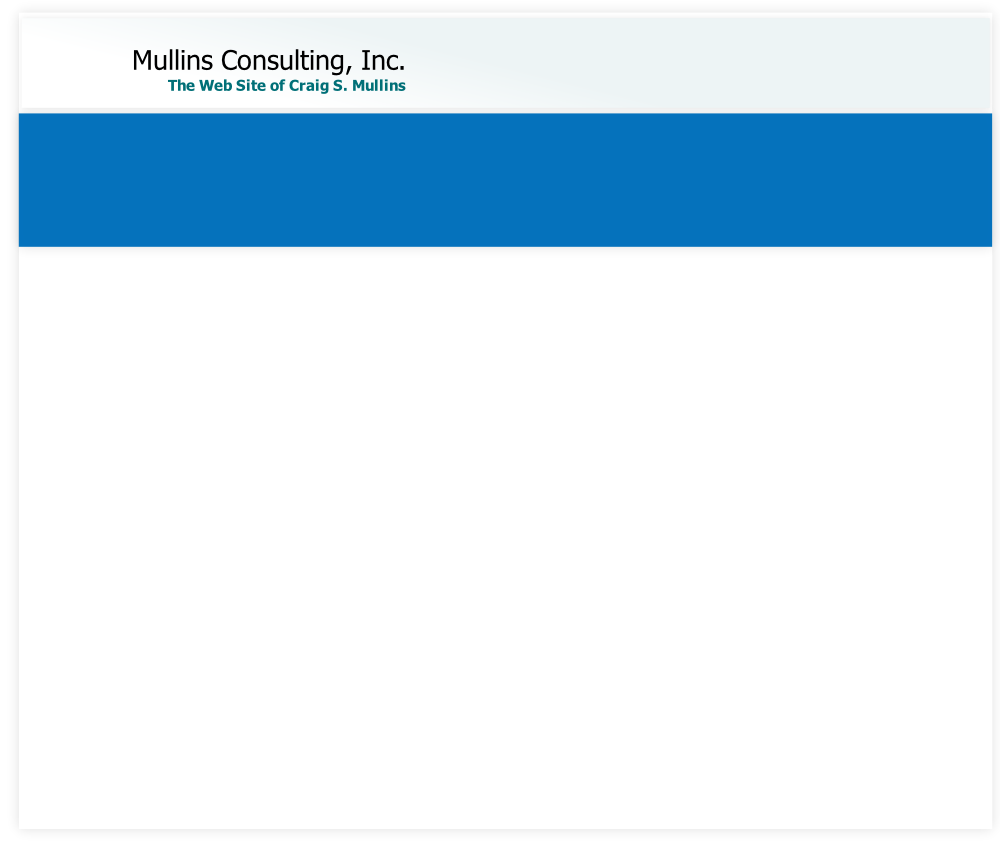© 2021 Mullins Consulting, Inc. All Rights Reserved Privacy Policy Contact Us




by Craig S. Mullins

Cost containment is an important IT department goal in this day and age of financial austerity. Every decision regarding your computing environment must be weighed not only against the value it can deliver to your organization, but also upon its cost to procure, implement, and maintain. If a positive return on investment cannot be rapidly delivered, then the software (or hardware) won’t be adopted.
Capacity planning can be an often overlooked opportunity for cost containment. Capacity planning is the process of determining the computing power needed by an organization to meet changing demands for its products. But capacity planning is perhaps a misnomer, because this group should not only be planning your capacity needs, but also managing your organization’s capacity. Actively managing your resources to fit your demand can reduce your IT department’s software bills… especially in a mainframe environment.
The mainframe is especially relevant because the total cost of mainframe computing can be quite high. And software is the biggest portion of that cost. The pricing model for most mainframe software is based on the capacity of the machine on which the software will run. This pricing model reflects the potential usage based on the capacity of the machine, not the actual usage. Some vendors offer pricing that is similar to usage-
IBM offers variable workload license charging (VWLC) for many of its popular software offerings. VWLC applies to products such as z/OS, DB2, IMS, CICS, MQSeries and COBOL. It is a monthly license pricing metric designed to more closely match software cost with its usage. Some of the benefits of VWLC include the ability to:
- Grow hardware capacity without necessarily increasing your software charges
- Pay for key software at LPAR-
level granularity - Experience a low cost of incremental growth
- Manage software cost by managing workload utilization
Basically, what happens with VWLC is that your MSU usage is tracked and reported by LPAR. You are charged based on the maximum rolling four hour (R4H) average MSU usage. R4H averages are calculated each hour, for each LPAR, for the month. Then you are charged -
So you pay for what you use… sort of. You actually pay based on LPAR usage, not product usage. Consider, for example, if you have DB2 and CICS both in a single LPAR, but CICS is only minimally used and DB2 is used a lot. Since they are both in the LPAR you’d be charged for the same amount of usage for both. But this will still cost less than being charged based on the capacity of your entire machine.
You go further by implementing soft capping on your system. With soft capping you can set the capacity for your system such that you are not charged for the entire capacity of your machine, but at a lower, defined capacity. Without soft capping you are charged the maximum R4H average per LPAR; with soft capping your charge by LPAR is based on the maximum R4H average or the defined capacity that you set, whichever is lower.
The downside to soft capping is that you are setting limits on the usage of your hardware. Even though your machine has a higher capacity, you’ve set a lower defined capacity and if the R4H average exceeds the defined capacity, your system is capped at the defined capacity level.
Of course, it can be complicated to set your defined capacity appropriately, especially when you get into setting it across multiple LPARs. There are tools on the market to automate the balancing of your defined capacity setting and thereby manage to your R4H average. The general idea behind such tools is to dynamically modify the defined capacity for each LPAR based on usage. The net result is that you manage to a global defined capacity across the CPC, increasing and decreasing the defined capacity on individual LPARs, and generally reducing monthly software costs. If you use soft capping, such a tool can pay for itself rather quickly.
Summary
Managing mainframe software costs by adopting VWLC and soft capping techniques can help your company to assure a cost effective IT organization. In today’s cost-
From Database Trends and Applications, September 2011.
© 2012 Craig S. Mullins,
September 2011

